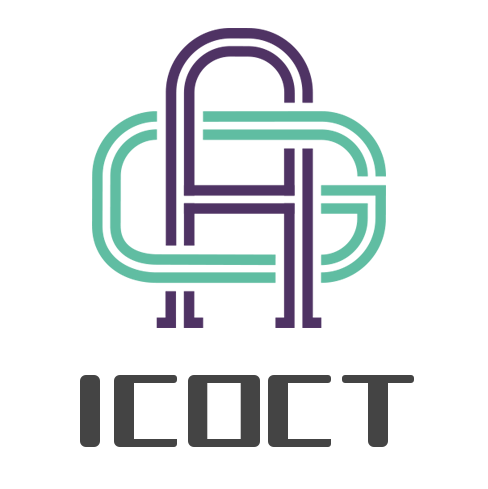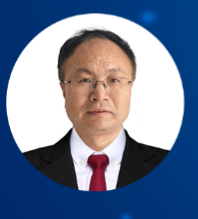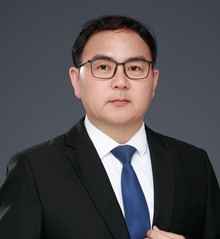◕ Keynote Speaker
| Prof. Guijun HuJilin University (National Leading Talent) Professor and doctoral supervisor at the School of Communication Engineering, Jilin University; Tang Aoqing Distinguished Leading Professor at Jilin University; Chief Scientist of a National Key R&D Program; Principal Investigator of a Major Scientific Instrument Development Project funded by the National Natural Science Foundation of China. He has served as a visiting scholar and senior researcher at the Korea Advanced Institute of Science and Technology (KAIST), the Center for Optical Sciences at the University of Central Florida, USA, and Bangor University, UK. He has been engaged in research on optical communications and optoelectronic devices. He has led more than 20 projects, including National Key R&D Program projects, Major Scientific Instrument Development Projects funded by the National Natural Science Foundation, General Projects of the National Natural Science Foundation, and major projects of Jilin Province. He has published over 100 papers and holds 21 authorized invention patents. He has received the Second Prize of Jilin Province Science and Technology Progress Award and the Second Prize of Jilin Province Natural Science Award, respectively. He has delivered more than 20 invited talks at domestic and international conferences. He is a senior member of the Chinese Optical Society, a senior member of the China Electronics Society, and a member of the China Committee of Fiber Optics and Integrated Optics. |
| Prof. Xiyuan ChenSoutheast University, China (IEEE Senior Member) The recipient of Southeast University’s first Young Faculty Teaching and Research Funding Program (2003), selected in 2006 for the Ministry of Education’s “New Century Talent Support Program” and Jiangsu Province’s “Qinglan Project” training program, became a Jiangsu Province “Six Talent Peaks” training candidate (Category A) in 2008, and was honored with the China Industry-University-Research Cooperation Innovation Award in 2015. He has received honors including Outstanding Communist Party Member of Southeast University, Advanced Individual in the Pioneer and Excellence Competition, and Excellent Supervisor of Southeast University. He currently serves concurrently as the Vice Chairman of the Academic Committee on Ship Instruments and Equipment of the China Society of Naval Architects and Marine Engineers, director of the China Instrument and Control Society, director of the China Society of Naval Architects and Marine Engineers, director of the China Ocean Engineering Consulting Association, vice chairman of the Jiangsu Association for Scientific Instrumentation, secretary general of the 10th Council of the Jiangsu Instrument and Control Society, member of the Jiangsu Graduate Education Steering Committee for Engineering (Category 1), member of the 10th Jiangsu Association for Science and Technology, invited reviewer for over 60 high-level domestic and international SCI/EI journals, communication review expert for various National Natural Science Foundation of China projects including General, Key, and Outstanding Youth programs, communication reviewer for national and Ministry of Education scientific projects and award evaluations, and the “Ten Thousand Talents Plan,” among others. |
| Prof. Xuefeng LiuNanjing University of Science and Technology A national innovative talent, professor and doctoral supervisor at the School of Electronic Engineering and Optoelectronic Technology, Nanjing University of Science and Technology. He has organized and participated in the core project development of Bookham, the world’s largest optical communication device company, as well as the development of the most advanced models in the optical imaging department of ASML, the largest manufacturer of integrated circuit lithography machines. In recent years, he has focused on participating in national major projects, organizing applications for the 973 Program and major instrument fund projects, and has obtained the Jiangsu Province Double Innovation Team Project. Through many years of research and development both domestically and internationally, he has jointly designed and produced 15 large-scale optical measurement and wavefront control systems, holding a substantial number of intellectual property rights, including 15 patents. He has also published numerous papers in areas such as lithography engineering, optical communication devices, optical wavefront control devices and systems, nano- and sub-nanometer scale optical wavefront deviations, and material structure and morphology detection. His main research focuses on grating mask design, electron beam lithography, and photolithography processes. |
◕ Invited Speaker
| Prof. Tao LeiShaanxi University of Science & Technology Lei Tao is a Level 3 Professor, Doctoral Supervisor, member of the Academic Committee of Shaanxi University of Science and Technology, and Vice Dean of the School of Electronic Information and Artificial Intelligence. He is a senior member of IEEE, CCF, and CSIG. Dr. Tao has been selected for the High-Level Talent Program of Shaanxi Province, recognized as an Outstanding Young Scholar in Shaanxi Province, included in the Stanford Global Top 2% Scientists list, and acknowledged as a high-contribution author in Wiley’s China Open Science initiative.He serves as an associate editor, editorial board member, and guest editor for seven journals, and has held various leadership positions, including general chair, technical committee chair, publicity chair, awards committee chair, and session chair at over 30 international conferences. His main research areas include computer vision and machine learning. He has published four monographs and conference proceedings, and has authored over 100 papers in prestigious journals and conferences, including IEEE TIP, IEEE TMI, IEEE TFS, IEEE TGRS, and IJCAI. Among these publications, there are nine ESI Highly Cited Papers, with more than 4,600 citations on Google Scholar.Dr. Tao has led various projects, including five funded by the National Natural Science Foundation, as well as initiatives from the Outstanding Young Scholar Fund of Shaanxi Province and the Key Research and Development Program of Shaanxi Province. He has received the Second Prize of Scientific and Technological Progress from Shaanxi Province and the First Prize for Outstanding Research Achievements from Higher Education Institutions in Gansu Province as the principal contributor. |




